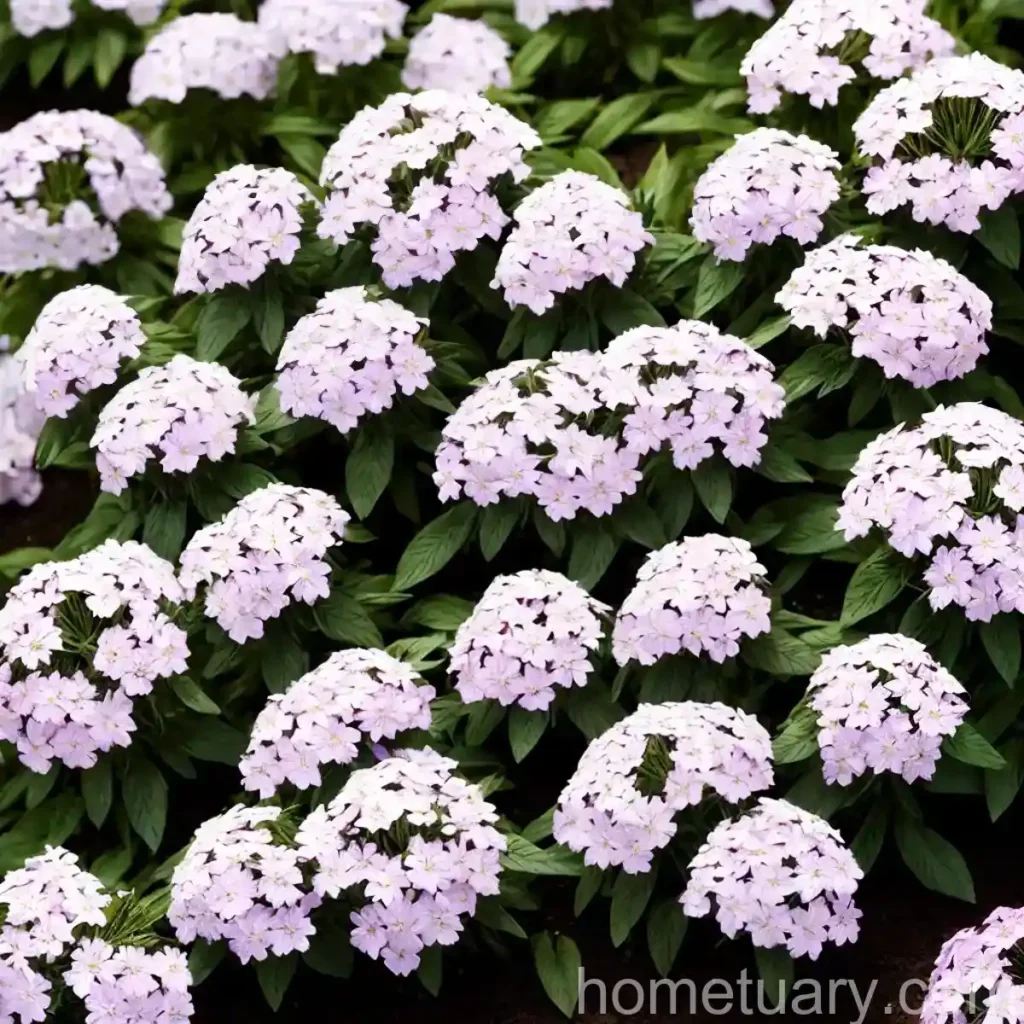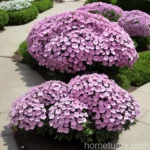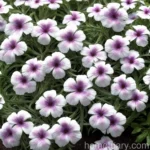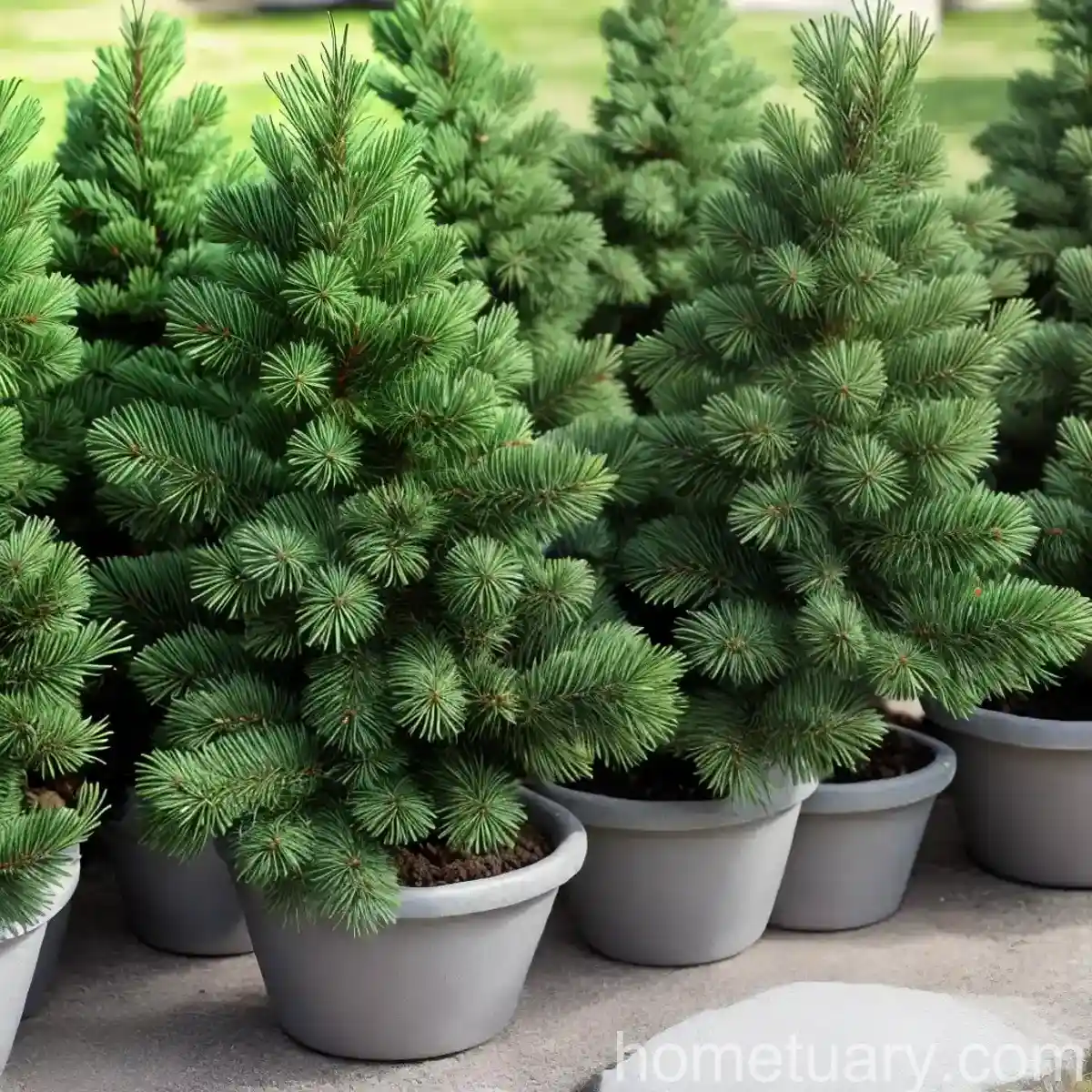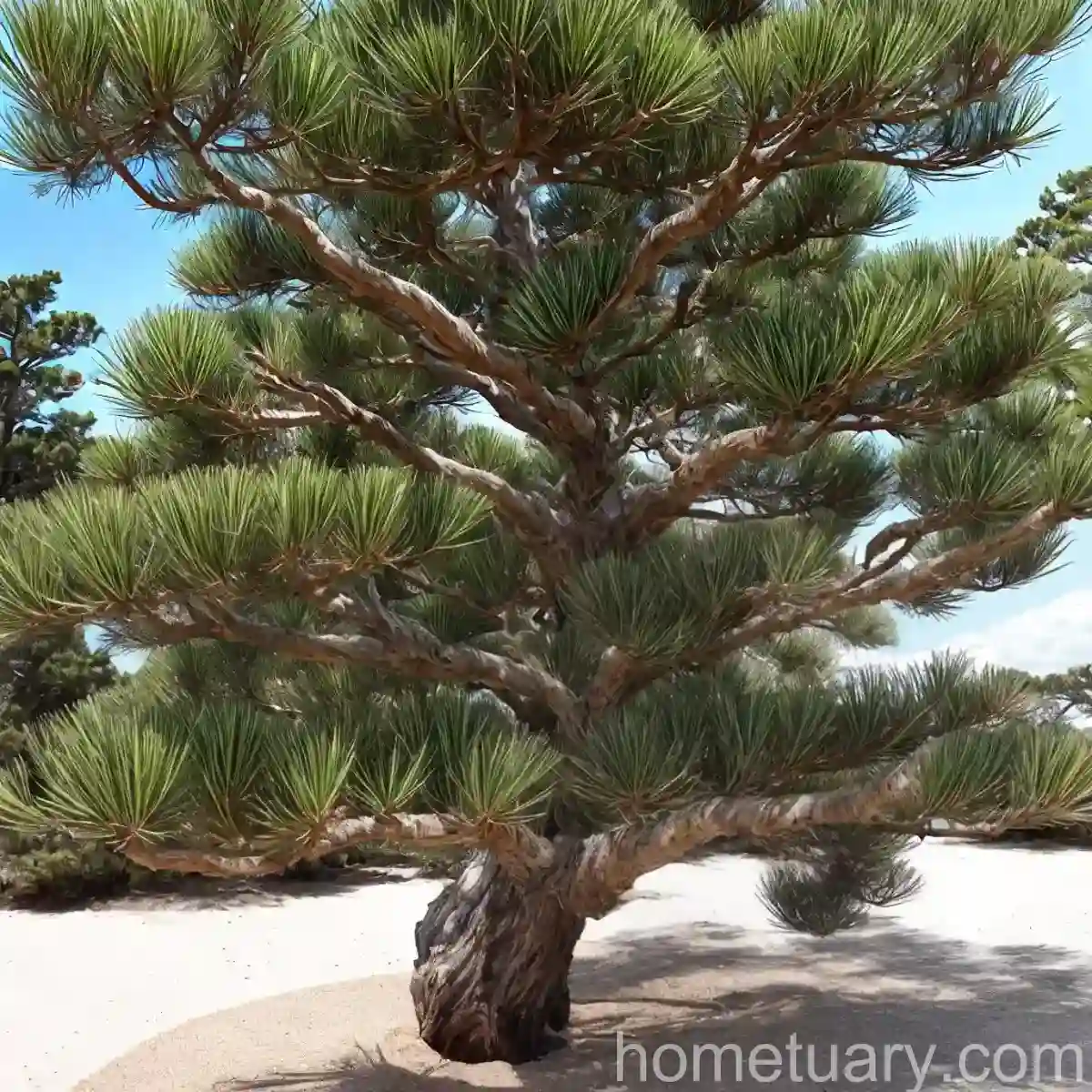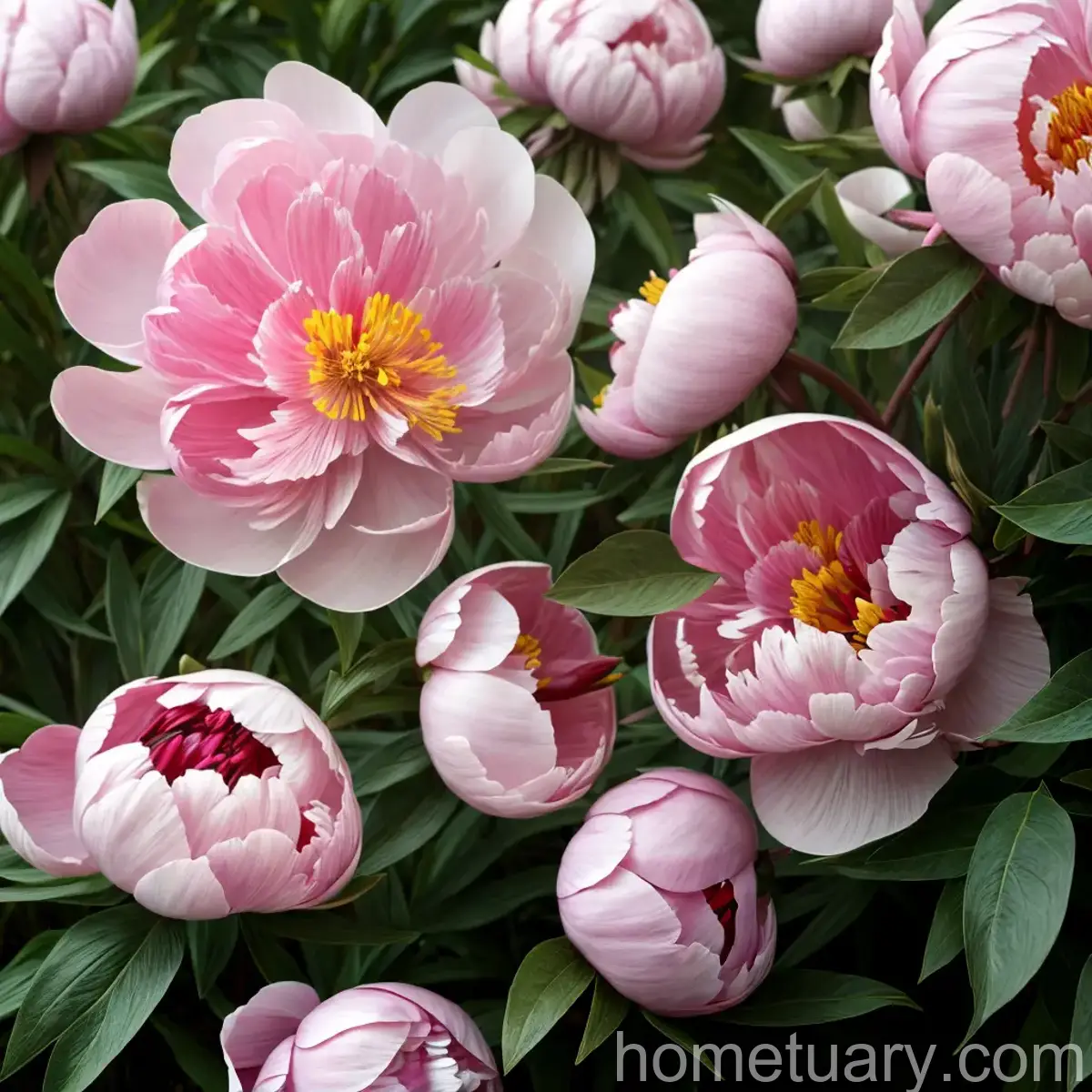Gardening with Garden Phlox (Phlox paniculata ‘Miss Kelly’)
Garden phlox, scientifically known as Phlox paniculata and commonly referred to as ‘Miss Kelly’, is a popular perennial plant known for its stunning clusters of fragrant, star-shaped flowers. The plant is beloved by gardeners for its vibrant colors, long blooming period, and low maintenance requirements. In this comprehensive guide, we will delve into the characteristics of garden phlox, explore the best practices for its cultivation, and discuss its cultural significance and uses in landscaping.
What is Garden Phlox (Phlox paniculata ‘Miss Kelly’)?
Garden phlox (Phlox paniculata ‘Miss Kelly’) is a herbaceous perennial plant native to North America. It belongs to the family Polemoniaceae and is renowned for its showy, densely packed flower heads that adorn its tall, upright stems. The cultivar ‘Miss Kelly’ is distinguished by its striking, bright pink blossoms and robust growth habit, making it a sought-after choice for garden enthusiasts.
Phlox paniculata ‘Miss Kelly’ Characteristics
- Flower Color: The ‘Miss Kelly’ variety of garden phlox displays vibrant pink flowers that attract butterflies and hummingbirds, adding to the charm of any garden setting.
- Height: It typically grows to a height of 2 to 4 feet, creating an eye-catching display in both formal garden borders and informal cottage garden settings.
- Bloom Time: The plant blooms from midsummer to early fall, prolonging the period of visual interest in the garden.
- Fragrance: One of the most appealing qualities of garden phlox is its delightful fragrance, which can perfume the air and enhance the sensory experience of the garden.
Key Takeaways – Garden Phlox (Phlox paniculata ‘Miss Kelly’)
Before we delve into the specifics of growing and caring for garden phlox, let’s highlight some key takeaways that will guide our discussion and provide a comprehensive understanding of this beautiful plant.
Key Takeaways
- Phlox paniculata ‘Miss Kelly’ is a stunning, fragrant perennial with bright pink flowers.
- It thrives in well-drained, fertile soil and requires regular watering to support its lush foliage and prolific blooms.
- Garden phlox prefers full sun to partial shade and benefits from appropriate spacing and air circulation to prevent diseases.
- Proper pruning, fertilization, and disease management are essential for maintaining the health and vigor of Phlox paniculata ‘Miss Kelly’.
- The plant can be propagated through division and cuttings, offering opportunities for expanding its presence in the garden or sharing with fellow gardeners.
With these key points in mind, let’s explore the cultural requirements, uses, and care guidelines for garden phlox to ensure successful cultivation and enjoyment of this beloved perennial.
Culture
Cultivating garden phlox successfully involves understanding and addressing its specific cultural requirements. To establish a thriving garden phlox (Phlox paniculata ‘Miss Kelly’) in your landscape, consider the following factors:
Water
Proper watering is crucial for the health and vigor of garden phlox. This species prefers consistently moist, well-drained soil. While garden phlox appreciates regular watering, it is essential to avoid waterlogging the soil, as excessive moisture can lead to root rot and other adverse effects. During periods of drought or high temperatures, providing supplemental irrigation can help sustain the plant and support continuous flowering.
Sunlight
Garden phlox thrives in full sun to partial shade. In regions with hot summers, providing afternoon shade can protect the plant from excessive heat stress and prolong the longevity of its blossoms. When planted in full sun, garden phlox typically exhibits more compact growth and produces an abundance of flowers, making it an ideal choice for sunny borders and garden beds.
Fertilizer
Fertilizing garden phlox can contribute to robust growth and prolific flowering. As a general guideline, applying a balanced, slow-release fertilizer in early spring can provide the necessary nutrients to support the plant’s establishment and development. Additionally, top-dressing the soil around garden phlox with organic matter, such as compost or well-rotted manure, can enhance soil fertility and promote overall plant health.
Soil
Well-drained, fertile soil is essential for the successful cultivation of garden phlox. The plant thrives in loamy, moisture-retentive soils with a slightly acidic to neutral pH. Prior to planting, amending the soil with organic matter and ensuring proper drainage can create an optimal growing environment for garden phlox. Additionally, incorporating a layer of mulch around the base of the plant helps retain soil moisture, suppress weed growth, and maintain stable soil temperatures.
Pruning
Pruning is a fundamental aspect of garden phlox care, as it helps maintain the plant’s shape, improve air circulation, and encourage vigorous growth and flowering. To effectively prune garden phlox (Phlox paniculata ‘Miss Kelly’), follow these guidelines:
- Deadheading: Regular deadheading, or the removal of spent flowers, prolongs the blooming period of garden phlox and prevents the formation of seeds, redirecting the energy of the plant into producing new blooms and maintaining a neat appearance.
- Thinning: Periodically thinning out the stems and removing any overcrowded or weak growth promotes airflow around the plant, minimizing the risk of fungal diseases and enhancing its overall health and vitality.
- Cutting Back: In late fall or early spring, cutting back the foliage to a few inches above the ground helps rejuvenate the plant and stimulates the growth of fresh, healthy shoots, preparing it for the upcoming growing season.
Propagation
Propagation presents an exciting opportunity to expand your collection of garden phlox or share this stunning plant with other gardening enthusiasts. Phlox paniculata ‘Miss Kelly’ can be propagated through several methods, including division and cuttings, offering flexibility and accessibility for gardeners seeking to multiply their plant stock.
Division
Dividing established clumps of garden phlox is a reliable and straightforward method of propagation. As the plant matures, it develops multiple crowns, allowing the gardener to carefully separate these sections to create new plants. Division is typically best performed in early spring or fall, when the plant is in a dormant or semi-dormant state, to minimize stress and promote successful establishment of the divided segments.
Cuttings
Taking stem cuttings is an effective way to propagate specific cultivars, such as Phlox paniculata ‘Miss Kelly’, while preserving the unique characteristics of the parent plant. Selecting healthy, non-flowering shoots and placing them in a suitable rooting medium, such as a mix of perlite and peat, encourages the development of roots, ultimately yielding new plants that faithfully replicate the desirable traits of the original specimen.
Container Popularity
Garden phlox, including the ‘Miss Kelly’ variety, is well-suited for container gardening, offering an array of possibilities for creative and versatile displays. When grown in containers, garden phlox can thrive on patios, balconies, or other confined spaces, bringing its captivating flowers and delightful fragrance to smaller outdoor environments.
Container
When selecting a container for garden phlox, opt for a spacious, well-draining vessel that accommodates the plant’s root system and provides ample room for growth. Additionally, ensuring adequate drainage holes in the container prevents waterlogging and promotes healthy root development. As garden phlox can attain considerable height, choosing a sufficiently large and stable container is essential to support its structure and prevent toppling.
Common Diseases
While garden phlox is generally robust and resilient, it can be susceptible to certain diseases, particularly in conditions that compromise its overall health and vigor. Being aware of common diseases affecting garden phlox and implementing preventive measures is instrumental in safeguarding the plant and preserving its ornamental value.
Disease Diagnosis
Understanding the symptoms and characteristics of common diseases that afflict garden phlox enables early detection and effective management. Some prevalent diseases that gardeners should monitor for include:
- Powdery Mildew: A fungal disease that manifests as powdery white patches on the leaves and stems, powdery mildew can weaken the plant and hinder its growth and flowering. Adequate air circulation and maintaining proper plant spacing can mitigate the risk of powdery mildew.
- Botrytis Blight: Also known as gray mold, botrytis blight can cause browning and decay of the plant’s foliage and flowers, particularly under humid and cool conditions. Ensuring good air circulation and promptly removing and disposing of affected plant parts can help manage botrytis blight.
Common Pests
Garden phlox can attract certain pests that pose challenges to its cultivation and aesthetic appeal. Vigilance and prompt intervention are essential for mitigating pest infestations and safeguarding the health and vitality of the plant.
Botanist’s Tips
To maintain the vigor and ornamental value of garden phlox (Phlox paniculata ‘Miss Kelly’), consider incorporating the following botanist’s tips into your cultivation practices:
-
Monitor Soil Moisture: Regularly assess the moisture levels in the soil to ensure the consistent hydration of garden phlox, particularly during periods of heat and drought. Implementing a reliable watering schedule and utilizing mulch contributes to adequate soil moisture retention and promotes optimal growth.
-
Promote Air Circulation: Pruning and thinning out the foliage of garden phlox encourage air circulation around the plant, reducing the risk of fungal diseases and enhancing its overall vigor. Additionally, providing appropriate spacing between individual plants allows for better airflow and minimizes the potential for disease development.
-
Support Beneficial Insects: Attracting and supporting beneficial insects, such as pollinators and natural predators of garden pests, contributes to the ecological balance of the garden and assists in the management of potential pest issues. Avoiding the use of broad-spectrum insecticides preserves the presence of beneficial insects and fosters a healthier garden ecosystem.
Fun Facts
Before we explore the uses of garden phlox in landscaping and gardening, let’s uncover some interesting and lesser-known facts about Phlox paniculata ‘Miss Kelly’:
- Garden phlox is a cherished favorite among pollinators, including bees and butterflies, due to its nectar-rich flowers and their irresistible fragrance and color.
- The genus name “Phlox” is derived from the Greek word for flame, alluding to the vibrant and fiery hues of the plant’s blossoms, which encompass an array of shades ranging from white and pink to lavender and red.
- In addition to being an enchanting garden specimen, garden phlox has historical significance, as it was utilized by indigenous peoples for its medicinal properties and as a source of natural dyes.
With these captivating facts in mind, we’ve gained a deeper appreciation for the cultural and ecological significance of garden phlox and its enduring allure in the world of horticulture.
Links to External Resources
To further enrich your knowledge of garden phlox and its cultivation, explore the following links to reputable external resources:
As we continue our exploration of garden phlox (Phlox paniculata ‘Miss Kelly’), we’ll delve into its uses in landscaping, companion planting, and its potential contributions to sustainable and environmentally-conscious gardening practices.
Uses in Landscaping
Garden phlox (Phlox paniculata ‘Miss Kelly’) offers a plethora of applications in landscaping, enhancing outdoor spaces with its vibrant blooms, captivating fragrance, and adaptability to diverse garden environments. Whether utilized as a focal point, massed in perennial borders, or integrated into mixed plantings, garden phlox contributes to the visual appeal and ecological value of the landscape.
Phlox paniculata ‘Miss Kelly’ Varieties
In addition to the ‘Miss Kelly’ cultivar, which showcases brilliant pink flowers, garden phlox is available in an array of captivating varieties, each distinguished by its unique flower color, growth habit, and ornamental characteristics. Some popular garden phlox varieties include:
- ‘David’: Noted for its pure white blossoms and mildew resistance, ‘David’ is a classic and widely cultivated variety of garden phlox that imparts elegance and versatility to garden settings.
- ‘Bright Eyes’: Exhibiting soft, pale pink flowers with contrasting crimson eyes, ‘Bright Eyes’ adds a charming and romantic element to garden borders and cottage-style plantings.
- ‘Blue Paradise’: Renowned for its rich, violet-blue blossoms, ‘Blue Paradise’ introduces a bold and captivating hue to the garden, attracting attention and pollinators with its radiant blooms.
Benefits of Growing Garden Phlox
Cultivating garden phlox (Phlox paniculata ‘Miss Kelly’) yields a range of benefits that enrich the landscape and contribute to the ecological balance of the garden. Consider the following advantages of growing garden phlox in your outdoor spaces:
- Pollinator Attraction: The nectar-rich flowers of garden phlox attract bees, butterflies, and hummingbirds, playing a vital role in supporting pollinator populations and promoting biodiversity in the garden ecosystem.
- Long Blooming Period: Garden phlox extends its blooming season from midsummer to early fall, providing a sustained display of colorful blossoms and enhancing the visual interest of the landscape throughout the growing season.
Companion Plants
Designing harmonious plant combinations that complement and enhance the ornamental qualities of garden phlox contributes to the overall aesthetic appeal and ecological benefits of the garden. When selecting companion plants for Phlox paniculata ‘Miss Kelly’, consider the following options to create visually captivating and ecologically resilient plantings:
Companion Plants that Complement Phlox paniculata ‘Miss Kelly’
-
Echinacea (Coneflowers): With their bold, daisy-like flowers in vibrant hues such as pink, purple, and white, coneflowers create a stunning contrast when paired with the pink blooms of garden phlox, offering a dynamic and visually engaging composition in mixed borders.
-
Salvia nemorosa (Meadow Sage): The upright, spiky flowers of meadow sage in shades of blue, purple, and white harmonize beautifully with the blossoms of garden phlox, creating a striking juxtaposition of colors and adding vertical interest to perennial plantings.
By integrating these and other compatible plant selections into the garden, you can establish dynamic and visually captivating compositions that highlight the natural beauty and ornamental value of garden phlox (Phlox paniculata ‘Miss Kelly’).
Sustainable Practices for Growing Garden Phlox
Incorporating sustainable and environmentally conscious practices into the cultivation of garden phlox aligns with the principles of responsible gardening and contributes to the long-term health and resilience of the garden ecosystem. Consider the following sustainable practices for growing garden phlox and promoting ecological balance in outdoor spaces:
Water Conservation
Efficient water usage is integral to sustainable gardening practices, particularly in regions prone to drought and water scarcity. Implementing water-saving techniques, such as utilizing drip irrigation, mulching, and capturing rainwater for garden use, minimizes wastage and supports the responsible management of water resources.
Attracting Beneficial Insects
Encouraging the presence of beneficial insects, such as pollinators and natural predators of garden pests, enhances the ecological balance of the garden and reduces the reliance on chemical insecticides. Planting diverse and nectar-rich flowers, including garden phlox, serves as an attractive resource for pollinators and contributes to the conservation of beneficial insect populations.
With an emphasis on sustainable cultivation practices, gardeners can align their gardening endeavors with principles of environmental stewardship and contribute to the preservation of natural resources and biodiversity.
Conclusion
Garden phlox (Phlox paniculata ‘Miss Kelly’) emerges as a multifaceted and alluring perennial plant that offers a profusion of vibrant flowers, delightful fragrance, and ecological value in garden settings. By embracing the cultural requirements, care guidelines, and uses of garden phlox, gardeners can cultivate thriving and visually captivating landscapes enriched by the enduring charm of this beloved species.
From understanding the specific needs of garden phlox in terms of water, sunlight, and soil, to exploring its applications in landscaping, companion planting, and sustainable gardening practices, the allure and adaptability of Phlox paniculata ‘Miss Kelly’ are undeniable. Whether adorning perennial borders, attracting pollinators, or contributing to the visual tapestry of the garden, garden phlox stands as a cherished and indispensable component of horticultural diversity and garden aesthetics.
By incorporating the insights and recommendations presented in this guide, gardening enthusiasts can embark on a rewarding journey of cultivating and appreciating garden phlox, celebrating its natural beauty and ecological contributions in outdoor spaces. With its enduring appeal and ornamental prowess, Phlox paniculata ‘Miss Kelly’ extends an invitation to gardeners to embrace its enchanting blooms and experience the transformative impact it bestows on the garden landscape.
As you embark on your gardening endeavors and explore the possibilities of cultivating garden phlox, may this guide serve as a valuable resource, enriching your knowledge and fostering a deeper appreciation for the cultural and horticultural significance of this captivating perennial plant.
The above blog post provides an in-depth exploration of garden phlox (Phlox paniculata ‘Miss Kelly’), covering its characteristics, cultural requirements, uses in landscaping, and sustainable gardening practices. The article offers comprehensive guidance for gardeners seeking to cultivate and appreciate the captivating allure of garden phlox in outdoor spaces. It is a valuable resource for individuals interested in horticulture, sustainable gardening, and ornamental plant cultivation. If you require any further information or have specific queries about garden phlox or related topics, please feel free to reach out for additional insights and assistance.
Please note that the external resource links provided are for informational purposes and do not imply endorsement or affiliation. For detailed and specialized inquiries, it is recommended to consult reputable botanical and horticultural sources for comprehensive guidance and tailored recommendations.

